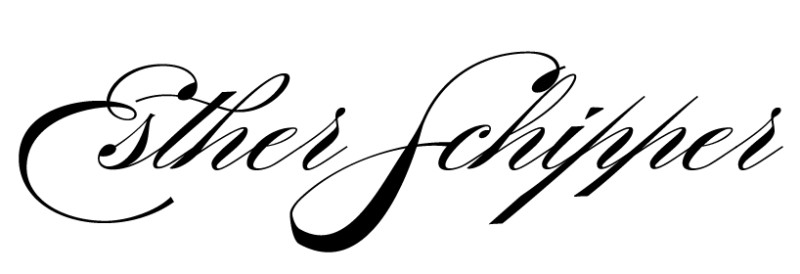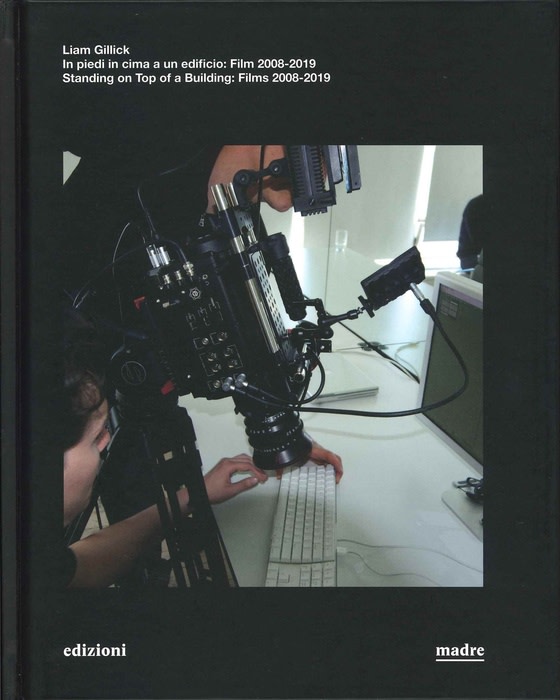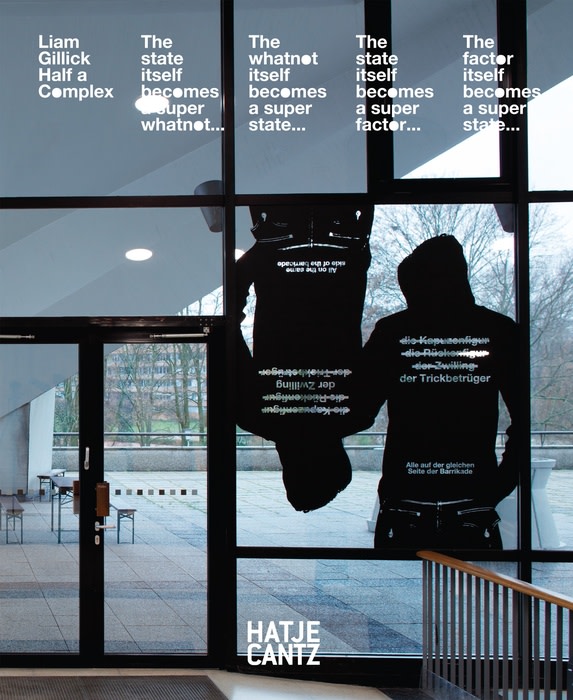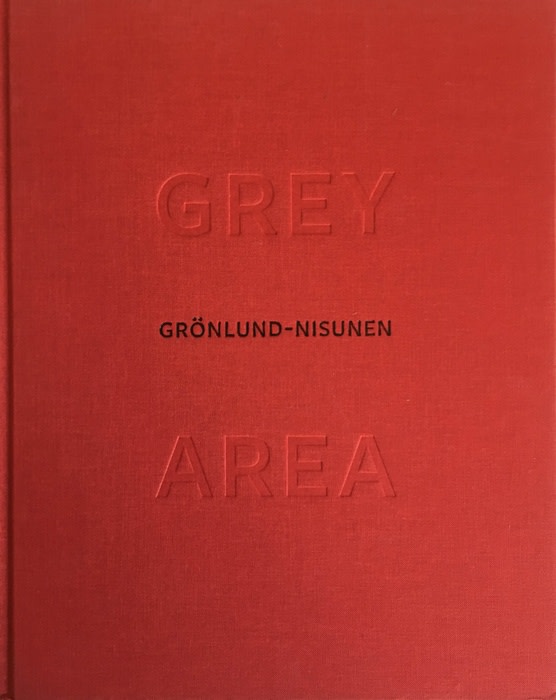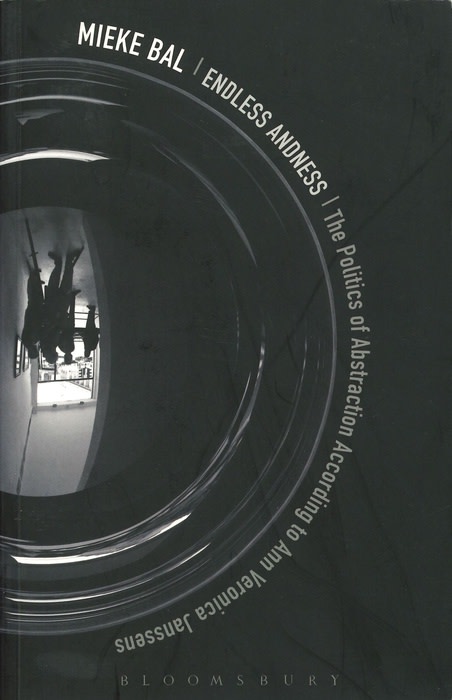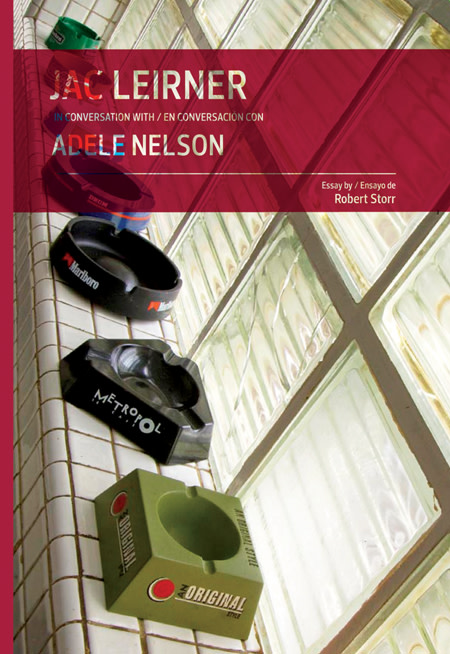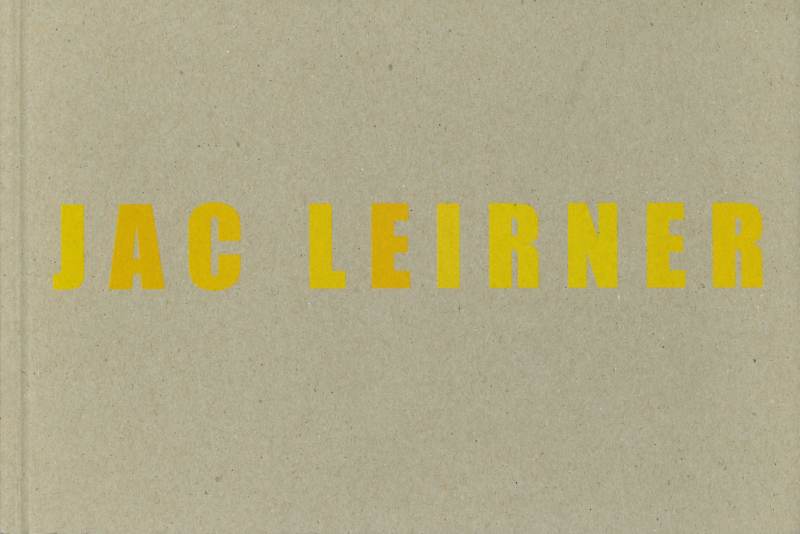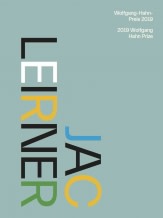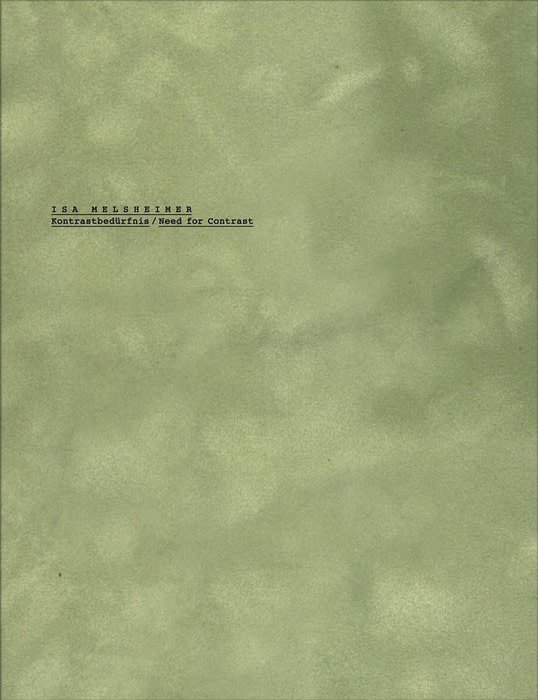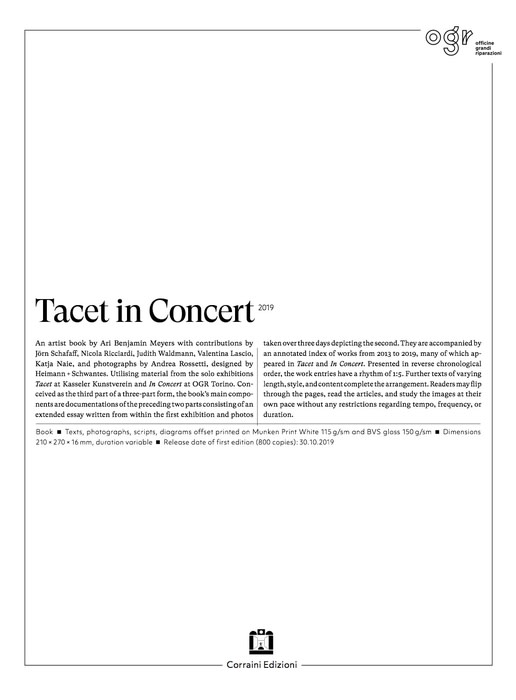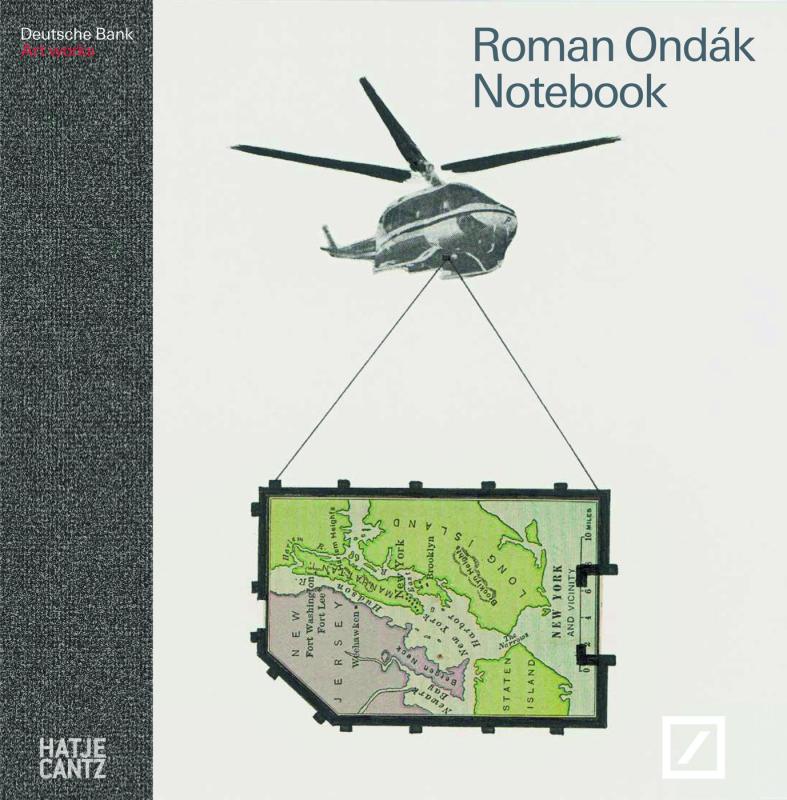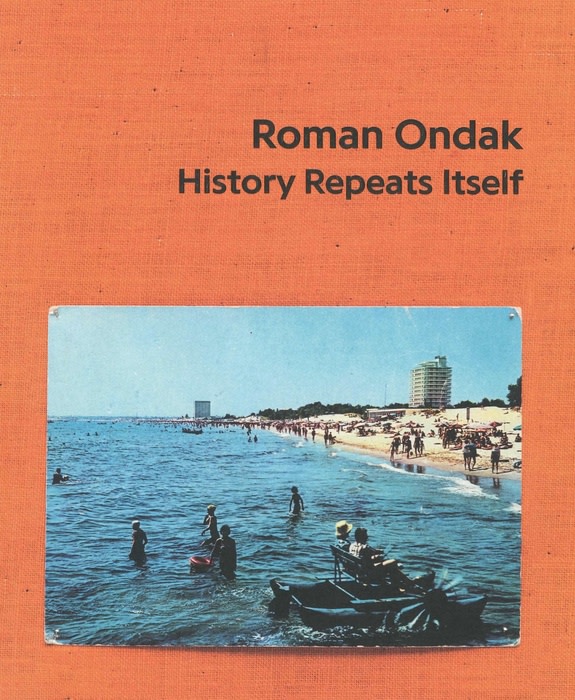Willkommen: Hier finden Sie die deutsche Fassung des Briefes aus Berlin
Welcome to this month's Letter from Berlin! We begin with Jac Leirner's exhibition in Berlin and invite you to explore our exhibition video. This weekend, Roman Ondak's performative work Swap will be activated at Frac Franche-Comté in Besançon. We reprint an excerpt from the artist's conversation on the work from 2011 with Udo Kittelmann. Ann Veronica Janssens is once again collaborating with Belgian choreographer Anne Teresa De Keersmaeker and the dance company Rosas, with performances taking place at Berlin's Neue Nationalgalerie, March 24-27. We introduce Ari Benjamin Meyers' large-scale public project, Rehearsing Philadelphia, which will begin the week of March 25, 2022, and culminate on Saturday, April 9, 2022 and reprint the artist's manifesto. On March 25, a film by Liam Gillick and Gelitin will premiere at the Copenhagen International Documentary Film Festival. In Reutlingen, Tommi Grönlund and Petteri Nisunen are participating in a group exhibition on time. We take Ryan Gander's new commission at Scarborough as occasion to look at the artist's recent public projects. Isa Melsheimer will open a solo presentation on Vassière Island, near Limoges. We hope you enjoy our Letter from Berlin!
|
|
|
Jac Leirner at Esther Schipper |
|
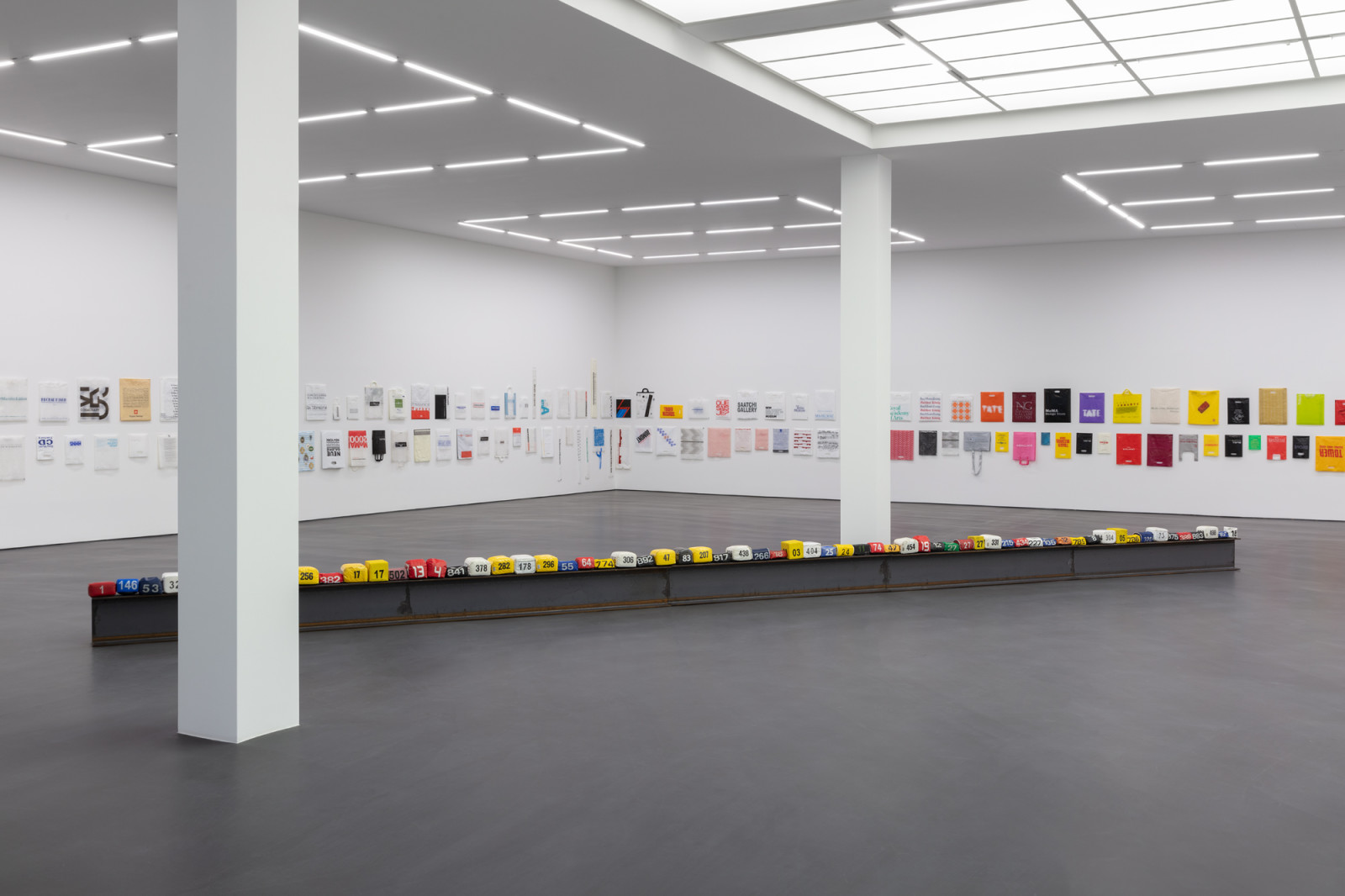
| Exhibition view: Jac Leirner, Us Horizon, Esther Schipper, Berlin, 2022. Photo © Andrea Rossetti | |
|
Last weekend Jac Leirner's first solo exhibition with the gallery opened, with new large-scale works. Here we present Us Horizon which gave the exhibition its title.
Installed at eye-level across three walls, Us Horizon, presents a double row of bags—those in the top row, right side up, those in the lower row, upside down. The work consists of 220 individual bags. The sequence is organized according to formal properties such as shape, color, fonts. As a series of graphic constellations and clusters of references, the bags are turned into a progression full of logic: circular logos become square ones, which in turn become monochrome shapes, and so on.
While the artist has consistently downplayed any autobiographical interpretations, references can of course be found: the bags range from the 1980s to today and attest to Leirner's love of books and of music, refer to exhibitions she participated in or visited, to museums in which she exhibited, or which hold her works in their collections. Other bags in the vast collection were given to her by friends.
Both the new linear presentation and the sources of the bags reinforce the work's relationship to language—a frequent reference for Leirner—as does the visitors' sequential experience. The simultaneity of seeing and reading is made possible by a perfect equilibrium between singularity and seriality, that is, between each individual bag and the entire group: every item appears to have equal value, even as it constitutes an integral component in the sequence.
Formally the presentation of the new large-scale work also points to the horizon line of a landscape, in this case one made up of institutions, artistic, literary and musical references, the work of fellow artists, colleagues and friends. As the title suggests, the horizon consists of all that makes us. And it is to where we look for the future.
|
|
|

| Exhibition views: Jac Leirner, Us Horizon, Esther Schipper, Berlin, 2022. Photos © Andrea Rossetti
| |
|
The body of work has its starting point in 1985, when Jac Leirner began collecting the bags before first exhibiting them at the 1989 São Paulo Biennial and the following year at the 44. Biennale di Venezia. At the time the central works of the series were presented as vast quilted surfaces, bag on bag, covering walls and in some instances also the floors. In addition, the artist produced sculptures from groups of slightly padded bags sewn-together. Later works, some with an exclusive focus on bags from art institutions were exhibited on the wall as grids, most recently, Museum Bags (1985/2019) at the Museum Ludwig, on occasion of the artist's receiving the 2019 Wolfgang Hahn Award.
|
|
|
 | Jac Leirner, Nomes [Names], 1990, Plastic bags, polyester foam, buckram, 500 x 640 cm.
Exhibition view: Aperto 90. 44ª Biennale di Venezia, 1990. Photo © the artist | |
|
Another work from the new series is Us Artists which has an unexpected narrative and poetic quality among Leirner's groupings of vintage plastic bags. Installed in two rows at eye-level, the ensemble assembles a group of artists to which Jac, as the title acknowledges, adds herself. The top row includes bags from exhibitions of works by Vincent van Gogh, Auguste Rodin, Felix Gonzalez-Torres, and Isa Genzken and, in a witty act of self-referentiality, a bag from a car dealership named Jac Motors Inesperado (Engl. unexpectedly). The lower row consists of bags without any discernible information: one has a camouflage pattern, the others are monochrome.
|
|
|

| Jac Leirner, Us Artists, 1985-2022, set of 9 plastic bags, 182 x 182 cm (variable). Photo © Andrea Rossetti | |
|
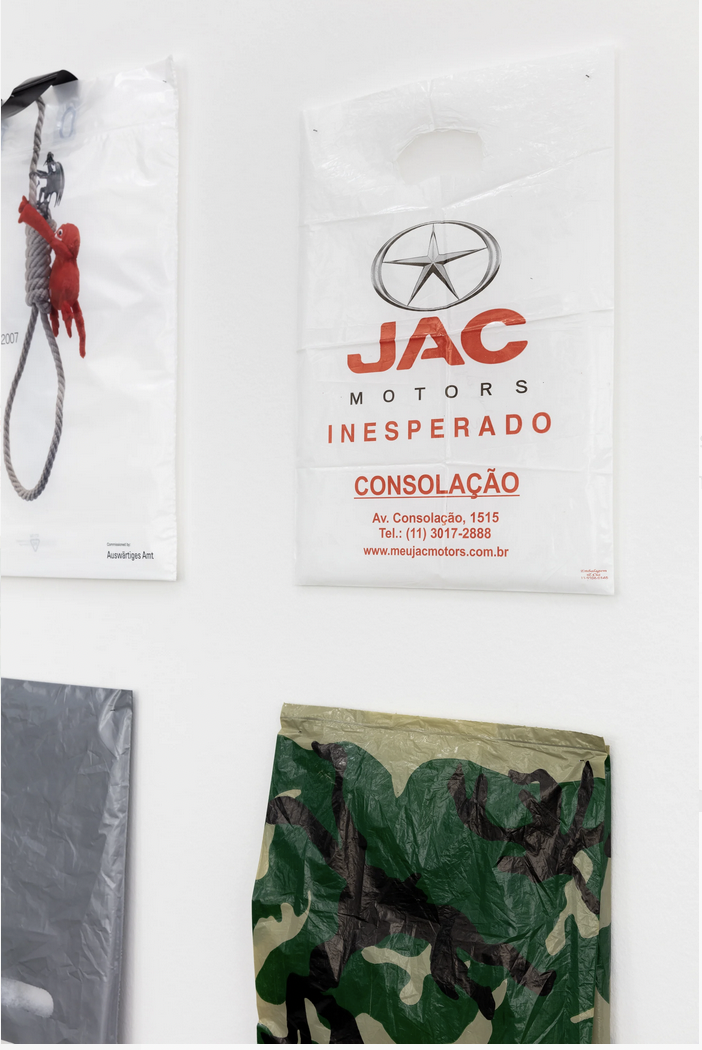
| Jac Leirner, Us Artists, 1985-2022, set of 9 plastic bags, 182 x 182 cm (variable) (detail). Photo © Andrea Rossetti
| |
|
In 2008, Jac Leirner first produced her so-called Void works (or Osso in Portuguese). Drawing on her groundbreaking earlier body of work of vintage plastic shopping bags, this series, Voids, modifies the individual bags, removing all writing. Sometimes only leaving a skeletal structure, what remains is characterized by geometric shapes—both those created by the leftover structure, the pattern, and colors of the bags and those of the cut-out voids where identifying writing and logos were removed.
Often it is the handles—either as appendages made from hard plastic or rubber or the double carrying loops that extend from the rectangular body of the bag—that allow us to identify the object's former function, even as the specific identifying marks have been removed. At the edges of the cut-out sections, we glimpse a view of the polyester foam inside the bag.
The play between corporeal presence created by the slight padding and the hollow opening that gives a view into the insides, through the bag and onto the support below, creates a compelling tension, similar to the dynamics of looking at abstract painting and sculpture. The confident presence of Jac Leirner's series Voids invokes the history of abstraction, pop and conceptual art, as well as the legacy of the readymade and the process of transforming a discarded everyday object into a work of art.
|
|
|
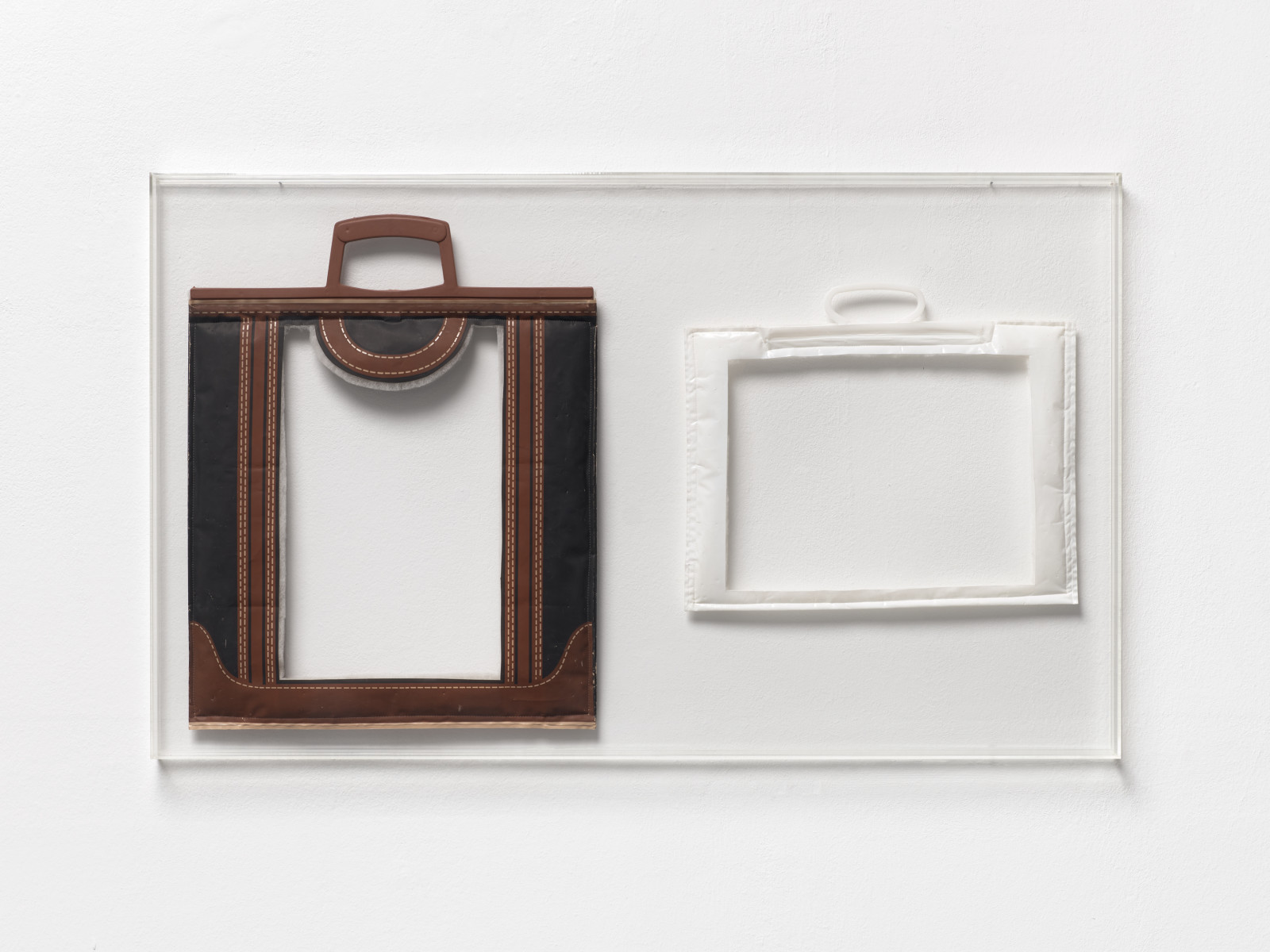
| Jac Leirner, Void 12, 2008, plastic bags, polyester foam, Plexiglas, 57,2 x 94,7 x 3,5 cm (framed). Photo © Andrea Rossetti
| |
|
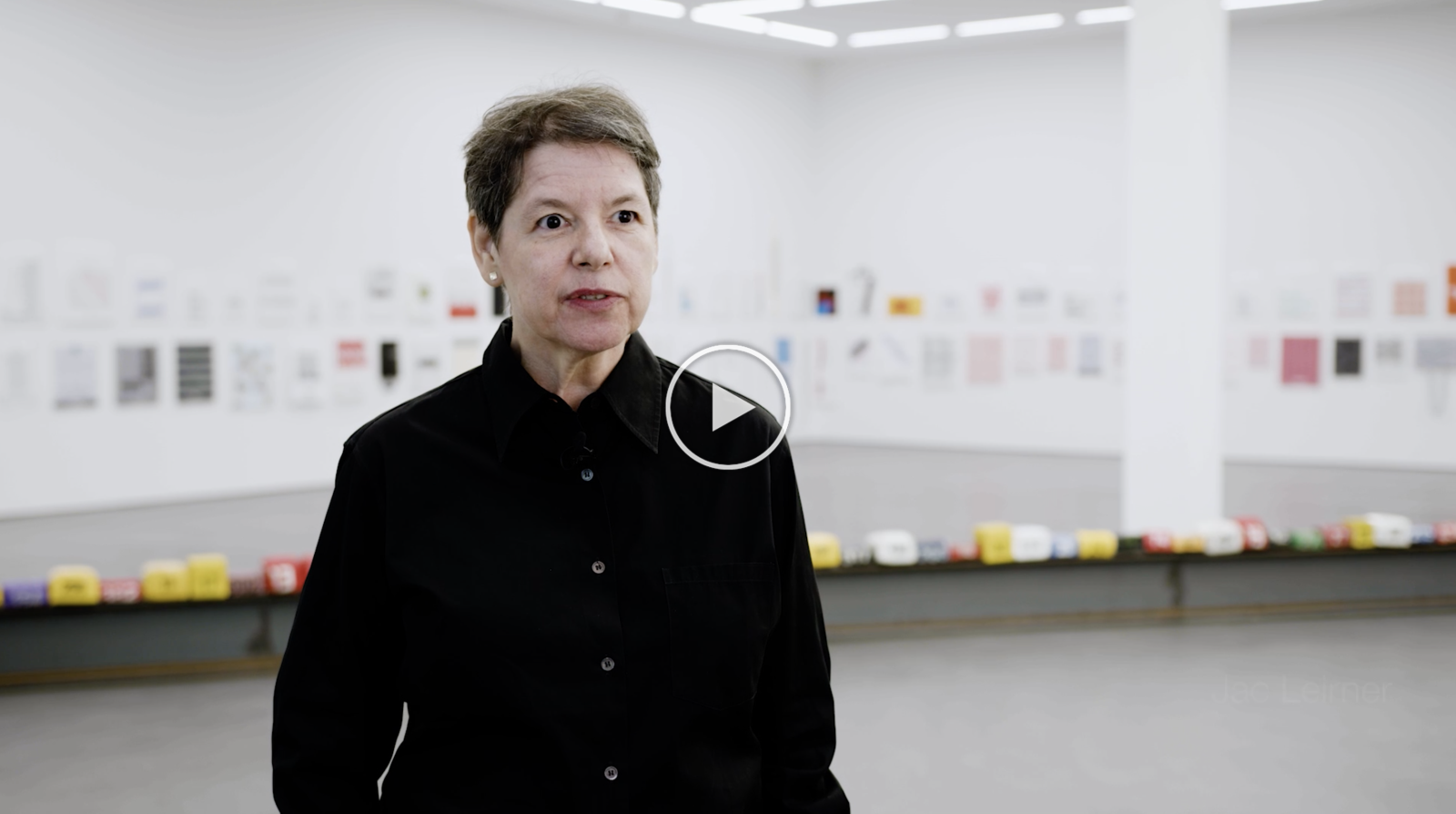
| Video by Art/Beats | |
|
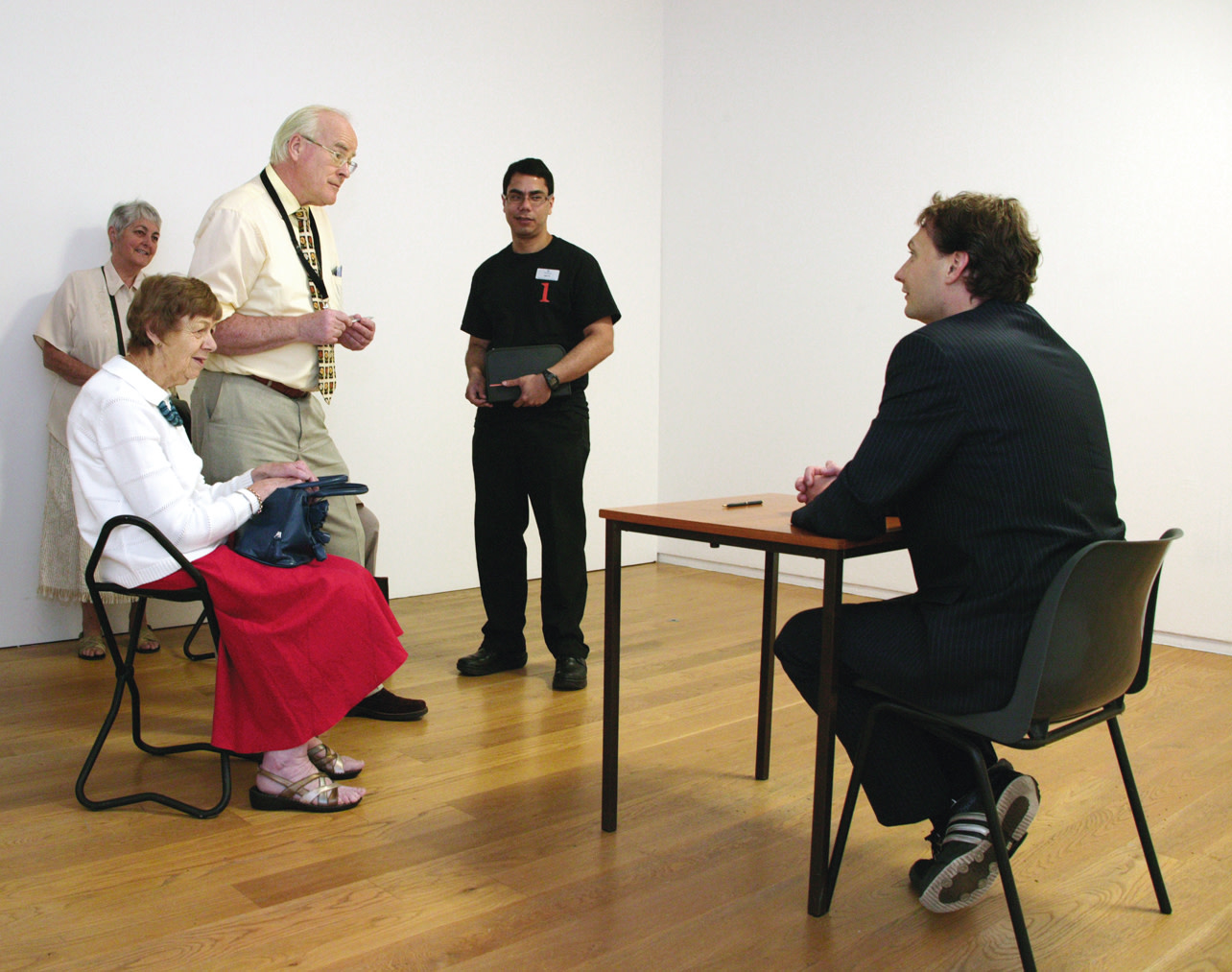
| Performance: 11 ROOMS, Manchester International Festival, 2011. Photo © Alan Seabright
| |
|
This coming weekend, Roman Ondak's Swap, 2011 will be part of a two-day program of performative works from the collection activated at the Frac Franche-Comté in Besançon.
Swap merges art with the everyday action of exchange. The artist selects a performer to sit behind a table like a vendor in a marketplace. The performer chooses an object, which sits on the table until the first visitor enters the room. The visitor is then given the opportunity to swap the object for anything else he or she is willing to exchange – a coin or watch, a feather or piece of paper. Setting in motion a chain of exchange, the performer continues to ask each visitor to trade an object with the one on the table. Each day the last object remains on the table until the following morning. Finally, at the exhibition’s close, the last performer leaves with the final object of that day.
The work yields entirely unpredictable results, and is dependent on the audience’s engagement in the moment. During the performance and even after the exhibition is over, the objects bartered during the performance are disseminated into the real world. This dynamic, arising from basic actions, is characteristic of Ondak’s performances: living artworks, responding to the complexity of human behavior.
Below we reprint excerpts from Roman Ondak's conversation with Udo Kittelmann. The full interview can be found in Roman Ondak, Notebook, ed. Deutsche Bank, published by Hatje Cantz, 2012.
|
|
|

| Performance: Kaldor Public Art Project 27; 13 ROOMS, 2013. Photo © Jamie North (Kaldor Public Art Projects) | |
|
Roman Ondak: In Swap, the image created by a performance disperses in reality, which happens in many of my performances. So there’s a man sitting behind a small square table and what happens is a never ending transformation through an exchange of objects. The performer chooses an object to begin with, which he puts on the table before the first visitor enters the room. That visitor is given the opportunity to swap the object for anything he or she is willing to exchange, thus setting in motion an endless chain: the performer asks the next visitor to swap an object with the one left on the table, and so on.
Udo Kittelmann: Today we live in a time of crises, of complicated, difficult economic situations. Could the swap be a kind of model for a new idea of an economy of exchange?
RO: Swapping in general is ruled by irrational decisions, far from calculations based on monetary values. It was interesting to watch how spontaneously people joined in the swapping, easily forgetting that something they offered for exchange was maybe ten times less valuable than what was found on the table at that very moment.
UK: It could teach us something.
RO: After seeing it live, I believe that’s true. Before it began I only had some assumptions about what the reactions of the audience could be. The situation is surprising, especially walking through an art exhibition—you might have checked your coat, or bag—to swap something when you might think you really have nothing…
UK: …that you can get rid of…
RO: …get rid of. Exactly. And what you can gain.
UK: I’m sure if you put a lot of pressure on any individual, pressure them to get rid of more and more of those things that really mean something to them, finally you might have only one thing that is really important to you. But that is probably the only thing you need to be happy…you don’t need to have all those other things.
I also wanted to ask, is there anything you expect from your visitors? I would imagine that you don’t want to leave them with something they don’t understand at all.
RO: Definitely, your question answers itself. My aim is to make works that are complicated and simple at the same time. It absolutely matters to me that people can get what I intended by the works.
|
|
|
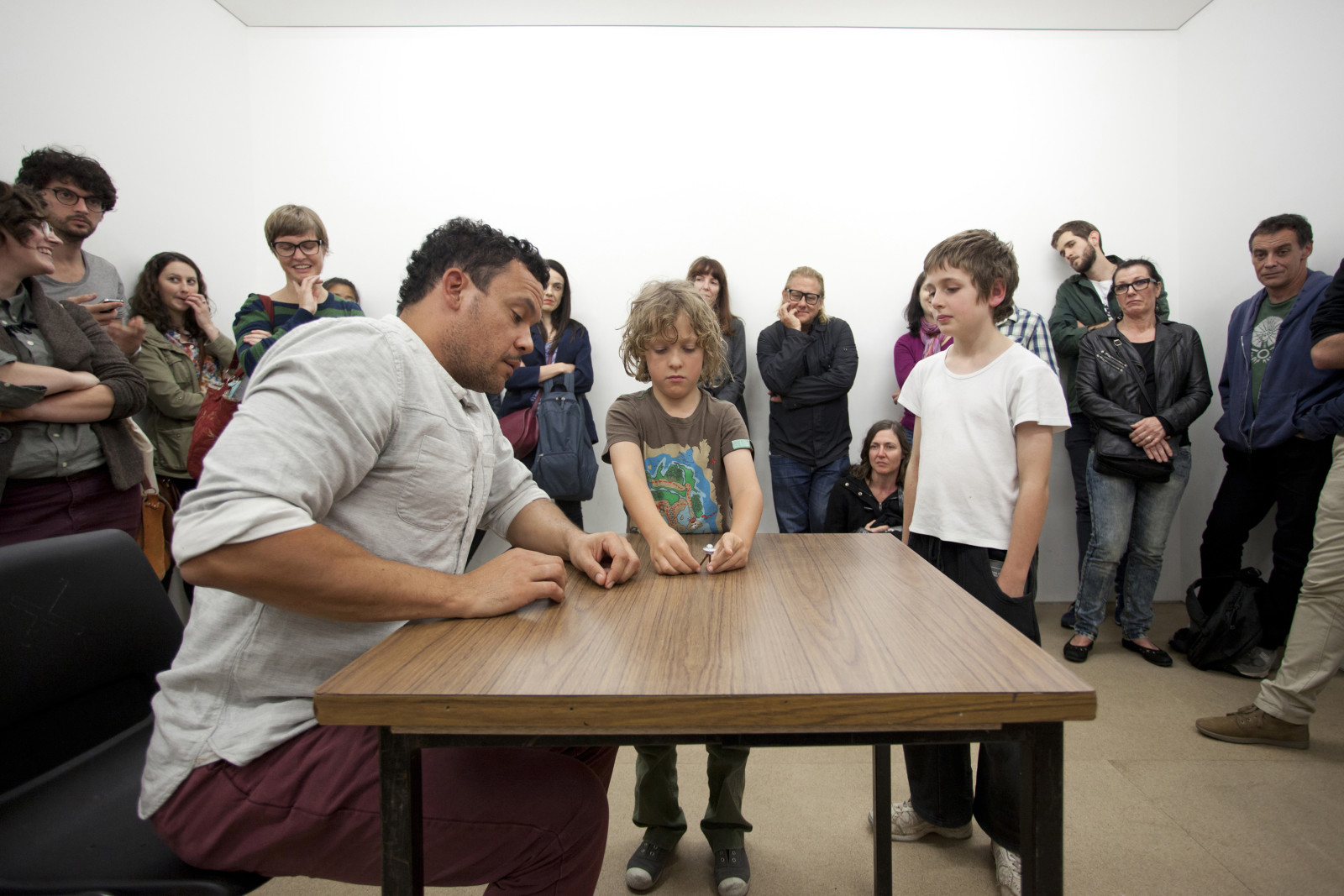
| Performance: Kaldor Public Art Project 27; 13 ROOMS, 2013, Photo © Jamie North (Kaldor Public Art Projects) | |
|
Udo Kittelmann: Most conceptual works feel quite cold, I think, and they’re not particularly emotional. Your works [...] have a kind of a beauty, and this is also quite rare, I think. To me, beauty means that there is something you can really enjoy looking at and experiencing it. I don’t know if you ever thought about how your works are so beautiful.
Roman Ondak: I’m certainly trying to transform beauty into them, sometimes maybe a different kind of beauty. You won’t believe it, but my way out of painting through object-based and later immaterial art in the late 1990s was affected by a period of skepticism in which I doubted whether it made any sense to do art or not, and whom for. Of course those questions were very much rooted in my local situation, in a country which was under constant transformation, but I never wanted to give up art. One of my thoughts at the time, which brought me to collaborative ideas to engage some people from my closest circles, was that there could be some other way in which people who seldom look at contemporary art, or were never really interested in contemporary art—like most members of my family—could get attracted by it through certain ideas, which would naturally involve them in becoming part of the process of its making. This opened up a completely new area for me. So my concepts were not based on creating images representing beauty, but on creating ideas, which would have potentially invisible beauty integrated into their core. I was really digging into these possibilities.
UK: Another thing is that I think everybody has a different understanding of beauty. But the kind of beauty you can create—which one can hold very tight, and take home in one’s mind, and keep forever—that is very rare. It’s like a poem; there are very few poems that you keep in your mind throughout your life… you can learn a few poems by heart, and keep them forever.
RO: In my view each day brings myriads of fleeting moments of beauty, but to make the space to notice at least some of them… well, I was interested in how far you can follow these moments and select the right one for closer inspection.
|
|
|
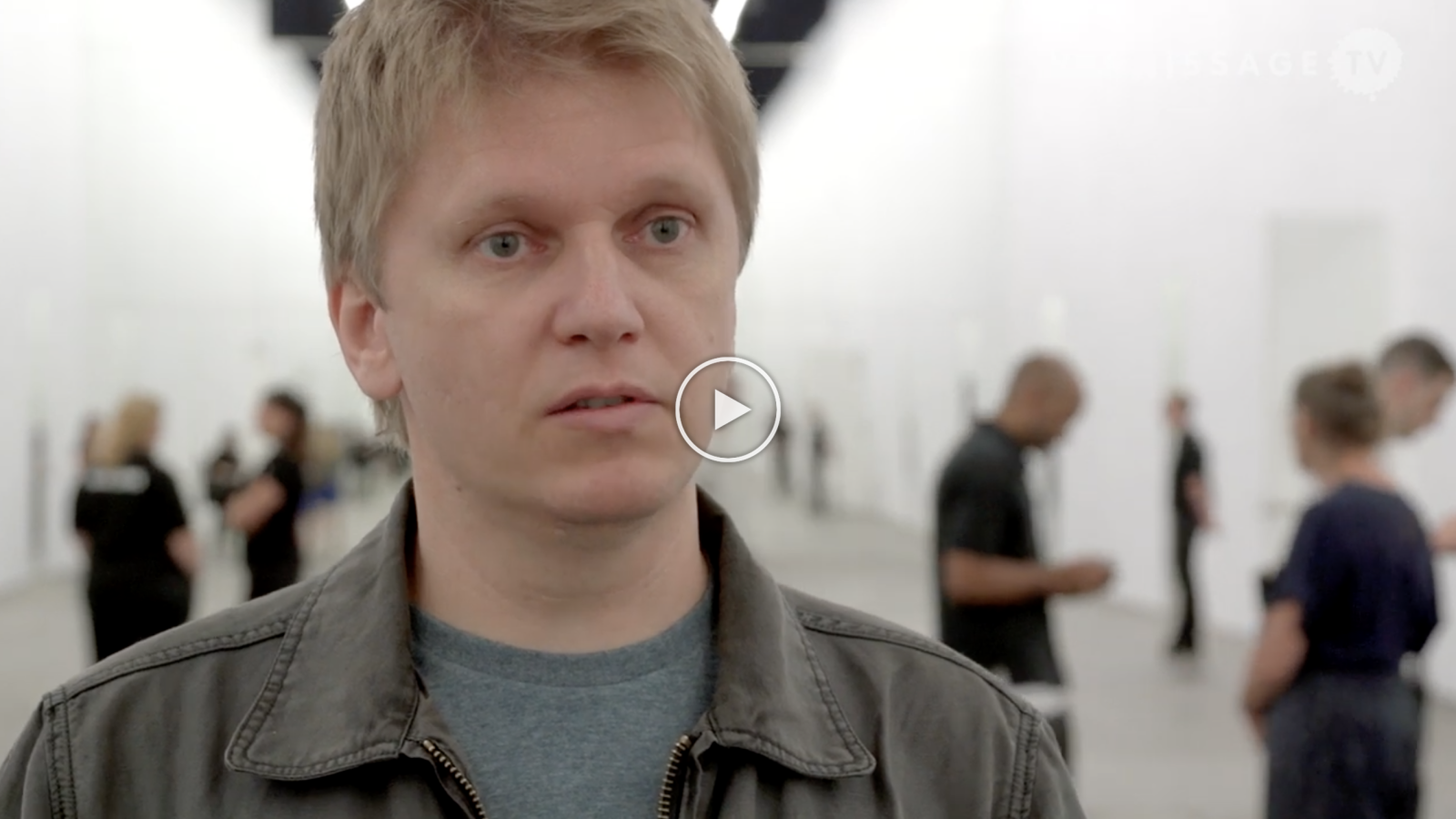
| Video by Vernissage TV | |
|
Ari Benjamin Meyers, Rehearsing Philadelphia
|
|
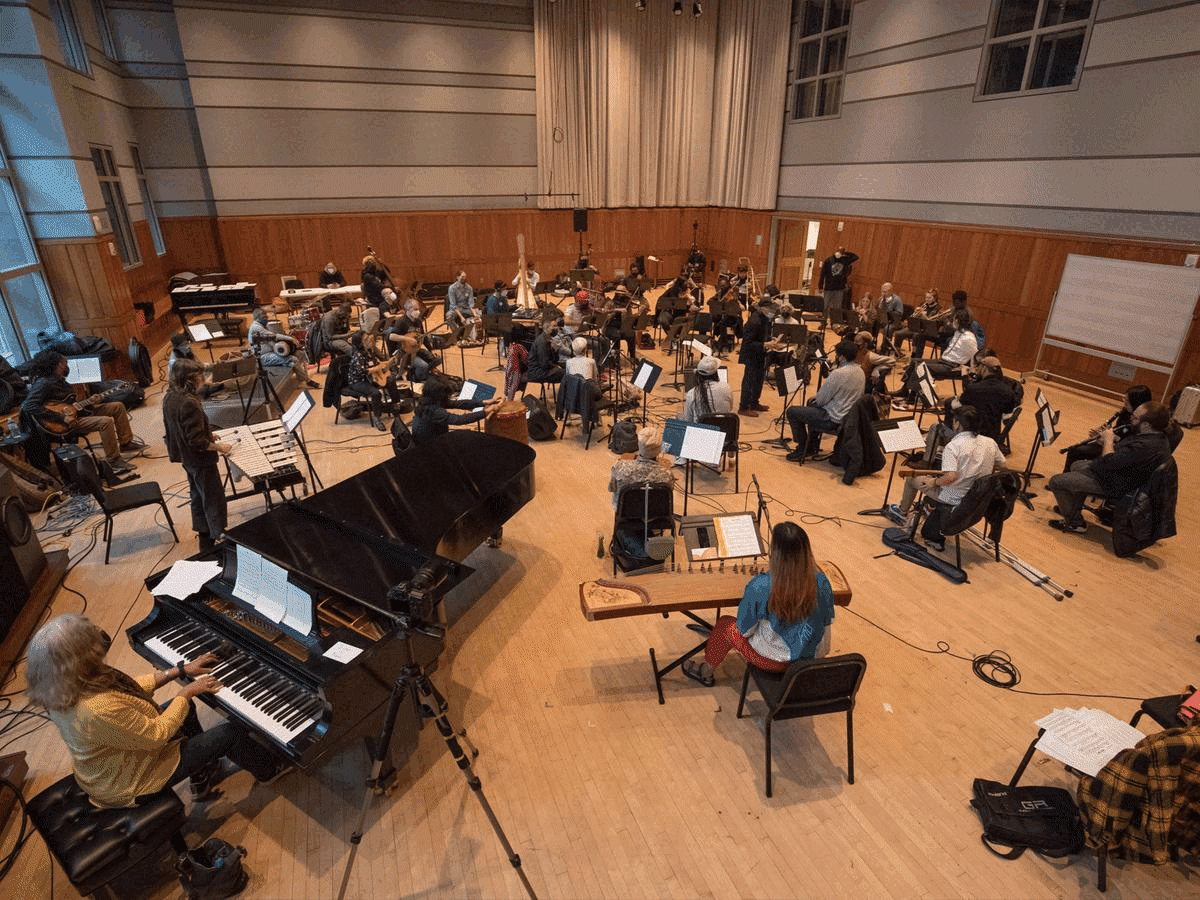
| Photos © Conrad Erb
| |
|
Created by Ari Benjamin Meyers and jointly produced and presented by the Curtis Institute of Music and Drexel University’s Westphal College of Media Arts & Design, Rehearsing Philadelphia is a large-scale public project that explores how we can come together as a city through musical rehearsal. The traditional musical preparation process focuses on rehearsing as a way to attain perfection, which is then repeated in performance. This is not how we live modern life in a rapidly changing world of social upheaval. The future will be rehearsed, not perfected. Rehearsing Philadelphia re-examines the rehearsal processes which allow people to act together and be empowered to create new realities.
Rehearsing Philadelphia will consist of four performative modules - Solo, Duet, Ensemble and Orchestra. As part of these modules, newly commissioned works will be performed live and involve in-person audience encounters at a variety of public and private venues across the city, including Philadelphia City Hall, the School District of Philadelphia, Philadelphia Police Headquarters, Perelman School of Medicine at the University of Pennsylvania, Cherry Street Pier and more. To accompany the live performances, artistic partner and digital strategist Vanessa Newman will design a parallel digital space where audiences can experience public art in the digital form.
As part of the meta-score Ari Benjamin Meyers invited artists to participate and create new work, including Ei Arakawa, Marshall Allen (Sun Ra Arkestra), Tyshawn Sorey, Zoë Keating, CA Conrad, Xenia Rubinos, Ursula Rucker and Ann Carlson.
The project will begin the week of March 25, 2022, and culminates with all four phases having final rehearsals on Saturday, April 9, 2022. For more information regarding performance details, participants and the virtual experience, visit rehearsingphiladelphia.com.
Below read Ari Benjamin Meyers' The Public Orchestra, A Manifesto
|
|
|

| Photo © Conrad Erb | |
|
The Public Orchestra, A Manifesto
Note: The word orchestra has its earliest known roots in the Sanskrit word ऋघायiतṛghāyati.
The word means to tremble with anger, rage, rave.
The Public Orchestra strives to be as diverse in all aspects as the city it is in.
A sonically diverse orchestra is a diverse orchestra.
Membership into the orchestra is not based on skill but rather enthusiasm and commitment. Diversity across all demographics and heterogeneity representative of the host city are the guiding principles for the makeup and instrumentation of the orchestra.
The only musical requirement is ownership or access to an instrument on which you have some (any) level of proficiency.The voice is also an instrument. It is not necessary to be able to read music.
Non genre-specific music education and expanding access to all instruments is a future and ongoing goal of The Public Orchestra.
All rehearsals are open.
All performances are free.
Rehearsing takes priority over performing.
Besides rehearsing musical works the rehearsals are also forums for conversation, discussion, and exchange. Rehearsals can also include a joint meal, a lecture, a film screening.
The Public Orchestra is not beholden to any repertoire or perceived standards of perfection. No pre-existing genre or tradition is ascribed to it but The Public Orchestra is indebted to the multitude of existing genres and traditions that exist in any one area.
Composers and other artists will be invited to create a new repertoire for this new body. The repertoire is shared between all Public Orchestras.
The Orchestra has a season; membership and rehearsals should remain more or less constant through each season.
The Public Orchestra is not beholden to any repertoire or perceived standards of perfection. No pre-existing genre or tradition is ascribed to it but The Public Orchestra is
indebted to the multitude of existing genres and traditions that exist in any one area.
Composers and other artists will be invited to create a new repertoire for this new body.
Repertoire is shared between all Public Orchestras.
The Orchestra has a season; membership and rehearsals should remain more or less constant through each season.
New Public Orchestras are formed with input from existing Public Orchestras. After the orchestra has been established for at least one season, the orchestra members ideally take control of all decision making. An advisory board may be established.
The Public Orchestra takes place locally but exists as a large interconnected body of all Public Orchestras.
The first Public Orchestra was created in Philadelphia in 2022.
- Ari Benjamin Meyers, Berlin 2021
|
|
|

| Photo © Conrad Erb | |
|

| Neue Nationalgalerie, Potsdamer Straße 50, Berlin-Tiergarten. © Staatliche Museen zu Berlin / David von Becker | |
|
At the Neue Nationalgalerie Anne Teresa De Keersmaeker presents Dark Red: an ongoing series of choreographies for museums. The expansive, transparent space of the iconic Nationalgalerie sets the stage for a new creation in a collaboration with choreographers and dancers Cassiel Gaube and Soa Ratsifandrihana, flutist Chryssi Dimitriou and Ann Veronica Janssens with whom Anne Teresa De Keersmaeker has already frequently collaborated in the past.
Over four days, the Belgian dance company Rosas will occupy the Exhibition Hall of the Neue Nationalgalerie with a performance that was specially created for the building. The piece provides museum-goers with a unique exploration of the interplay between architecture, sculpture, music and dance. The Rosas production Dark Red (a series of compositions made for different museum spaces) has most recently been performed at Kolumba in Cologne and at Fondation Beyeler in Basel.
Dark Red’s multi-day showing marks the first performance of a major choreographic work in Mies van der Rohe’s iconic museum building. The vast, transparent space of the exhibition hall serves as the stage for this dance piece.
The performance takes the theme of breath as its point of departure, which has long been a central choreographic principle in De Keersmaeker’s art, and is a theme that takes on a new relevance against the backdrop of the pandemic. The piece involves a live performance of L’Opera per Faluto by Salvatore Sciarrino, in which the existential need for breath and air is expressed through music. Echoing the process of inhaling and exhaling, the dancers move through the room in the cyclical motion of a pulsating spiral.
Dark Red was conceived in 2019 as a progressive series of self-reflexive performances carrying dance from the black box into the white cube. It is the first time a strong dialogue with the architecture takes centre stage. The new choreography is founded on the confrontation between the architectural logic of consolidation and the contingency of body and time. Dark Red - Neue Nationalgalerie Berlin sizes up the geometry of utopia against the utopia of geometry and confronts it with the dancing, breathing body.
Anne Teresa De Keersmaeker (born 1960) created her first choreographic work in 1980, after studying dance at the Mudra School in Brussels and at Tisch School of the Arts in New York. She founded the dance company Rosas in 1983, with which she has created a wide-ranging body of work that engages with the musical styles of several historical periods. De Keersmaeker’s choreographic practice draws on formal principles from geometry and social structures, offering a unique perspective on the movement of the body through space and time.
The performances will take place from 24–27 March 2022 during the regular opening hours of the museum. |
|
|
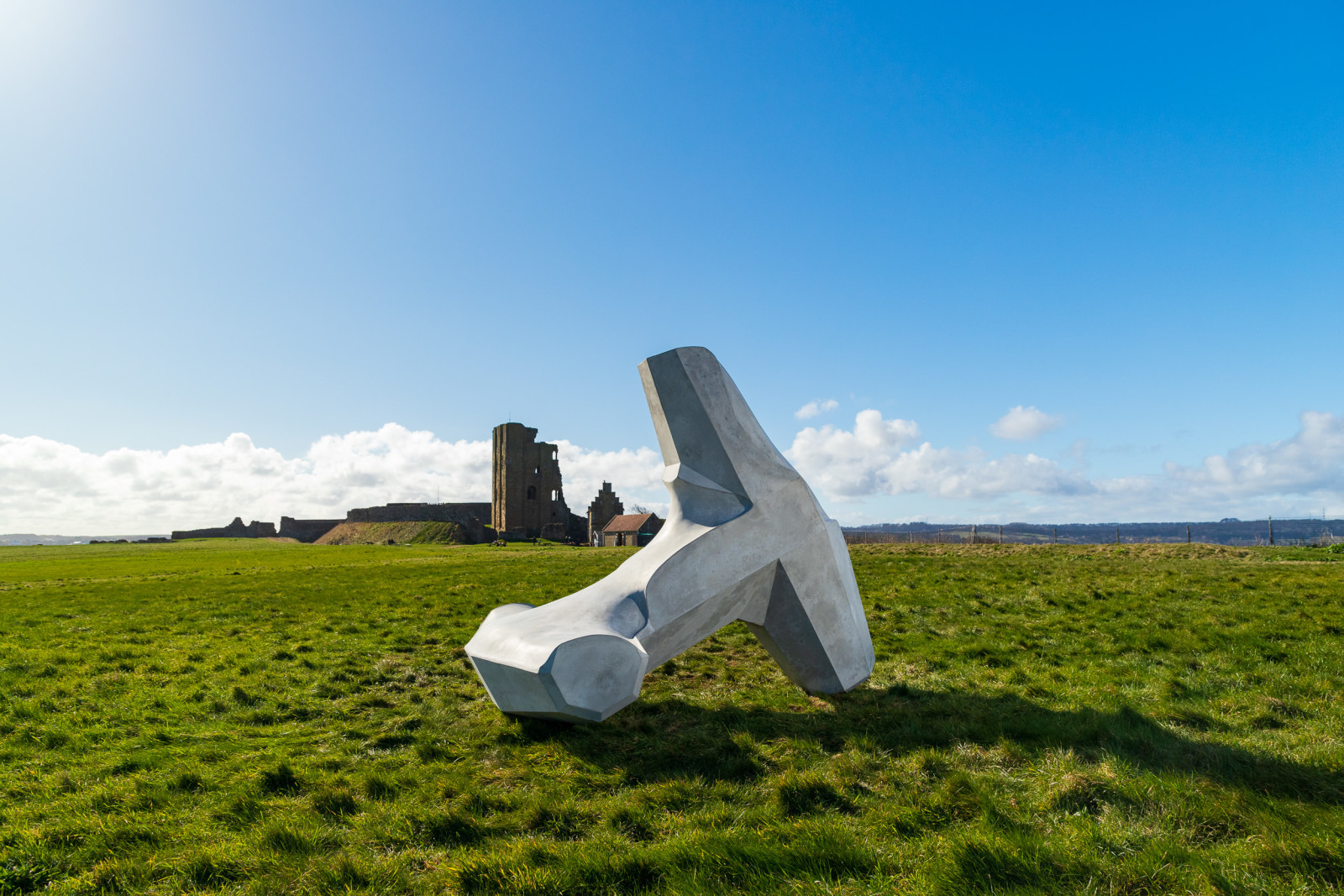
| Ryan Gander, We are only human (Incomplete sculpture for Scarborough to be finished by snow), 2022, Low carbon concrete, Eco-Cork, 2275 x 2110 x 2420 mm. © Ryan Gander / VG Bild-Kunst, Bonn, 2022; Courtesy Ryan Gander Studio; Photograph by Jules Lister
| |
|
Ryan Gander's We are only human (Incomplete sculpture for Scarborough to be finished by snow), was commissioned by Invisible Dust, Yorkshire Wildlife Trust and English Heritage for the Scarborough Castle headland.
The sculpture also functions as a seating structure and a viewpoint for clifftop wildlife and sea views. It is hoped it will provide a waymarker to an incredible coastal view and a point of interest for residents and visitors alike.
Inspired by structures used to prevent coastal erosion, the sculpture’s design has been adapted so that its form is only completed if it is snowed on, something increasingly unlikely due to climate change. It draws attention to the important role of the sea in absorbing carbon and slowing climate change and local coastal erosion. The sculpture will be made of an innovative low carbon material, incorporating recycled glass and limestone.
The sculpture is part of Wild Eye, a new, long-term art and nature project for the North Yorkshire Coast, which seeks to engage local people and visitors with the incredible wildlife of the region, through a programme of collaborative art commissions and a diverse community events programme.
|
|
|
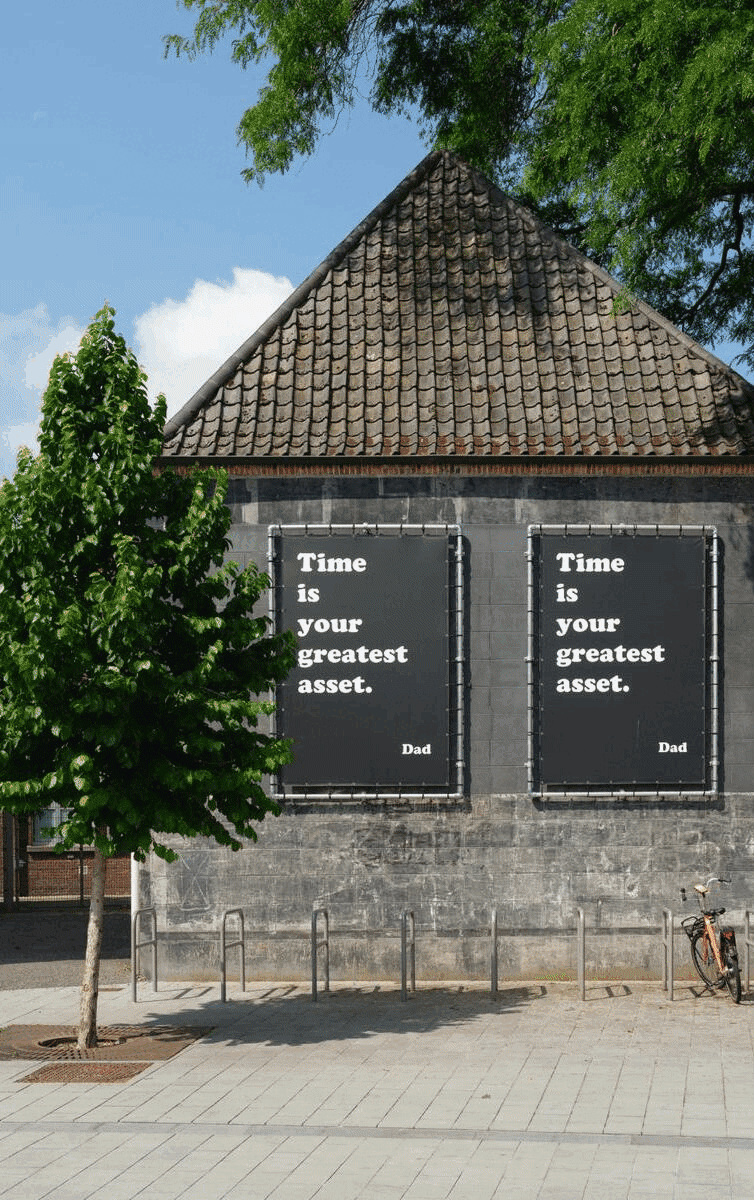
| Exhibition views: Paradise Kortrijk 2021 – Triennial for Contemporary Art, Kortrijk, 2021. Photos © Steven Decroos | |
|
As part of the 2021 Kortrijk Triennial for contemporary art, Ryan Gander brought his statement “(...) time and attention are our greatest assets (...)” to life in installations that revealed themselves throughout the city.
At the city center, the Grote Markt: Black vending machine, containing stones and black jesmonite casts
The works Spending Time (2021) and Saving Time (2021) are a pair of black vending machines where you can purchase objects at the standardised price of two euro. Alluding to the theme: ‘the economy of time, money, and attention’, whoever throws in money can become the owner of a stone the artist’s children collected from the beach, or a cast of these stones in black jesmonite with mass produced watches wrapped around them, or porcelain recreations of stones embossed with a geotag of GPS coordinates, or the ISBN of a book, or numbers indicating an important moment in modern history.
At the city center and throughout the town: Large-scale public signage
Advice from the artist’s father (2021) shows a variety of public signage situated around the city, displaying a saying often repeated by the artist’s father when the artist was a child, reminding the viewer of his original statement to ‘appreciate and own our time’.
At the city center and throughout the town: Bronze sculptures, variable dimensions
In Search of Time (2021) consists of ten bronze sculptures. Using the same motif as the jesmonite casts in the vending machine, Gander placed these bronze editions in obscure, unusual locations throughout the city. There’s a map that guides you from the city centre to these places that you would normally pass by carelessly — a short walk. As if on a treasure hunt, Gander invites you to discover urban stories and forgotten parts of the city.
At the Oxfam Bookshop: Second-hand books with stamps, variable dimensions.
With Within your own margins (2021), Gander offers a series of second-hand books for sale at the Oxfam Bookshop in Kortrijk. Each book bears the artist’s stamp in black ink with one of two texts: “Attention is your greatest asset” or “Within this volume time and space will be radically transformed by you”.
|
|
|

| Ryan Gander, From five minds of great vision (The Metropolitan Cathedral of Christ the King disassembled and reassembled to conjure resting places in the public realm), 2018 in 'Time moves quickly', Liverpool Biennial, 2018. © Ryan Gander; Courtesy Ryan Gander Studio; Photograph by Rob Battersby
| |
|
As part of the Liverpool Biennial 2018, Ryan Gander presented a major new project at Bluecoat Gallery, Time Moves Quickly. Gander worked collaboratively with five children from Knotty Ash Primary School in Liverpool – Jamie Clark, Phoebe Edwards, Tianna Mehta, Maisie Williams and Joshua Yates – to produce a series of artworks and a film exploring the activities carried out in the workshops. The project takes inspiration from the Montessori method of education, based on self-directed activity, hands-on learning and collaborative play. In addition to the presentation at Bluecoat, Gander and the children created a new public artwork for the city. Five bench-like sculptures were placed on the plateau behind the Liverpool Metropolitan Cathedral.
For the 2018 commission, Ryan Gander dissected a model of architect Frederick Gibberd’s modernist cathedral into a series of simple ‘building blocks’. The blocks were then reassembled into different configurations by schoolchildren from the chosen local school children. The maquettes that Gander and the children created were then reproduced on a larger scale to produce this public seating arrangement within the cathedral grounds. |
|
|

| Ryan Gander, The Green and the Gardens, 2019, Cambridge Biomedical Campus
© Ryan Gander; Courtesy Ryan Gander Studio; Photographs by Charles Emerson
This commission is comprised of the following five sculptures: 'Inside And Outside', 'Rain Or Shine', 'Solid and Hollow', 'Public and Private', 'Open And Closed'
| |
|
The Green & The Gardens was created as a public space for everyone in the Cambridge Biomedical Campus – patients, employees and visitors.
Led by Ryan Gander, in collaboration with Gillespies, landscape architects, the concept transforms the space into a green heart of the campus, a shared place for everyone. Together they developed the design, selected the planting, furniture, and lighting. Gander integrated sculptural elements: coloured tents that glow at night, an open gateway, a stile, and a community noticeboard.
The Green is an open, circular, green space for the campus community. It combines lawn, trees, seating, sculptures, and lighting. It is a flexible space for individual use or group events and activities, reminiscent of the common grounds across England’s towns and villages where there used to be a commonplace to walk around for personal and communal recreation.
The Gardens are rain gardens, designed to capture the rainwater run-off from buildings, pavements and other hard surfaces and then temporarily store, clean and slowly release that water back into the soil or natural drainage system, using the power of plants. This provides an area of smaller green spaces for individuals and groups. It combines wildflower planting, orchard trees, picnic tables, drinking water fountains, sculpture, and lighting. |
|
|
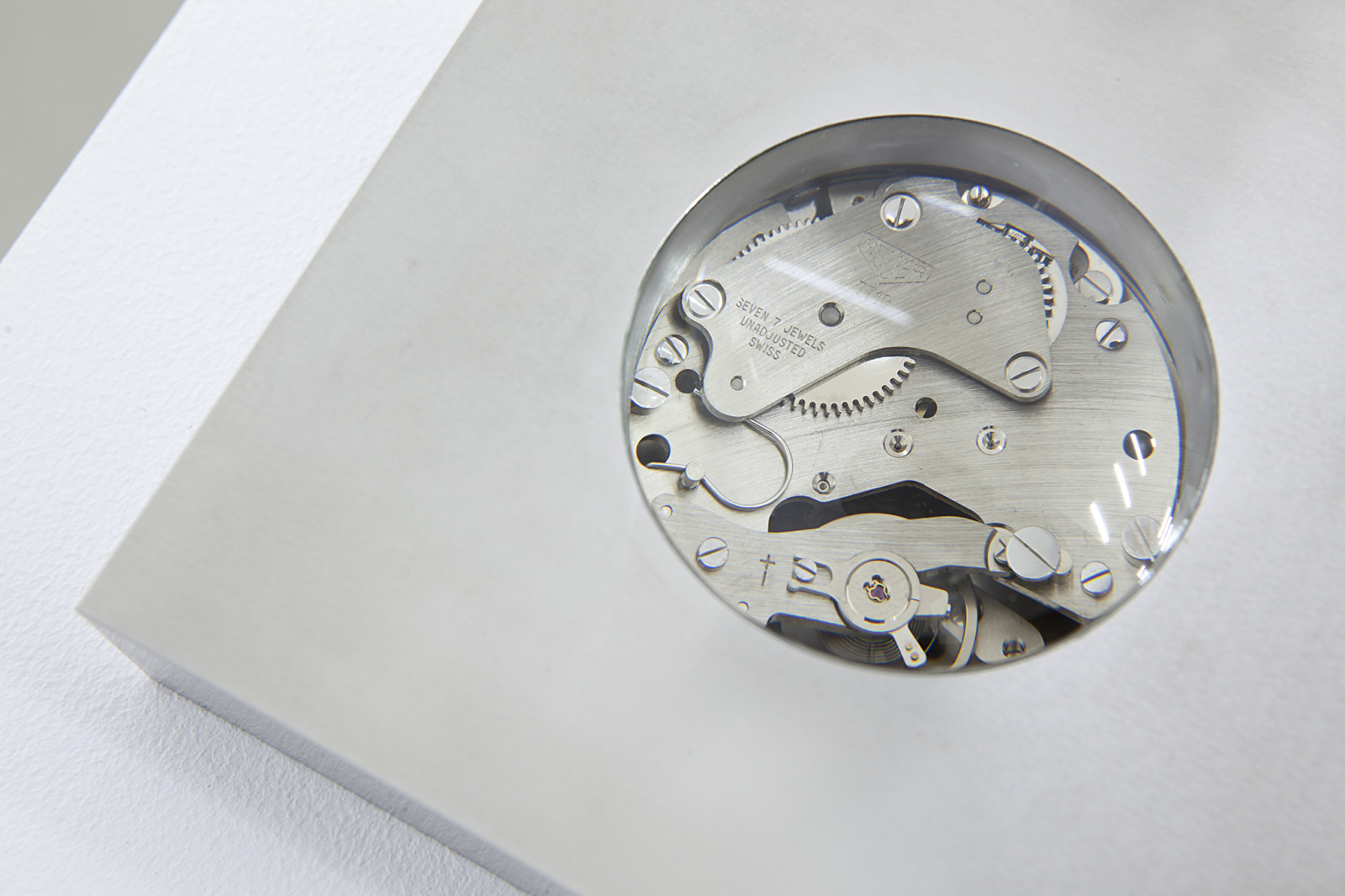
| Grönlund-Nisunen, Large Movement, 2013 (detail), stainless steel, glass, clock movement, 4 x 12 x 12 cm. Photo © Andrea Rossetti | |
|
Past – Present – Future. No concept shapes our daily lives as much as that of time. We require time to localize ourselves and to plan ahead. Time is not perceptible in and of itself, but we experience it in relation to the now, to what was before and what came after. The passage of time is objectively measurable. Its experience, on the other hand, depends on individual expectations, perceptions, and memories. Nowadays the captured past is collected digitally and in seemingly placeless and timeless databases. Our fast-paced reality is also mirrored in the visual representations of art that became mobile. Time has always been a subject that art has dealt with. In the 21st century this appears to be less about images of future accelerations, but concerning designs on slowness, elongation, repetition and stand still. The works by 13 international artists in the exhibition On Trickling Away. Concepts of Time in Contemporary Art hone in on these ideas and make the passing of time tangible. Instead of attempting to dissolve the paradox between normative time and lived temporality, the selected artists appear to follow Gilles Deleuze’s philosophical dictum: People – as continuously becoming individuals - can experiment with the conditions of life and existence only when they recognise the flow of time. The exhibition is curated by Holger Kube Ventura. The accompanying catalogue Vom Verrinnen. Zeitkonzepte der Gegenwartskunst / On Trickling Away. Concepts of Time in Contemporary Art can be found here.
|
|
|
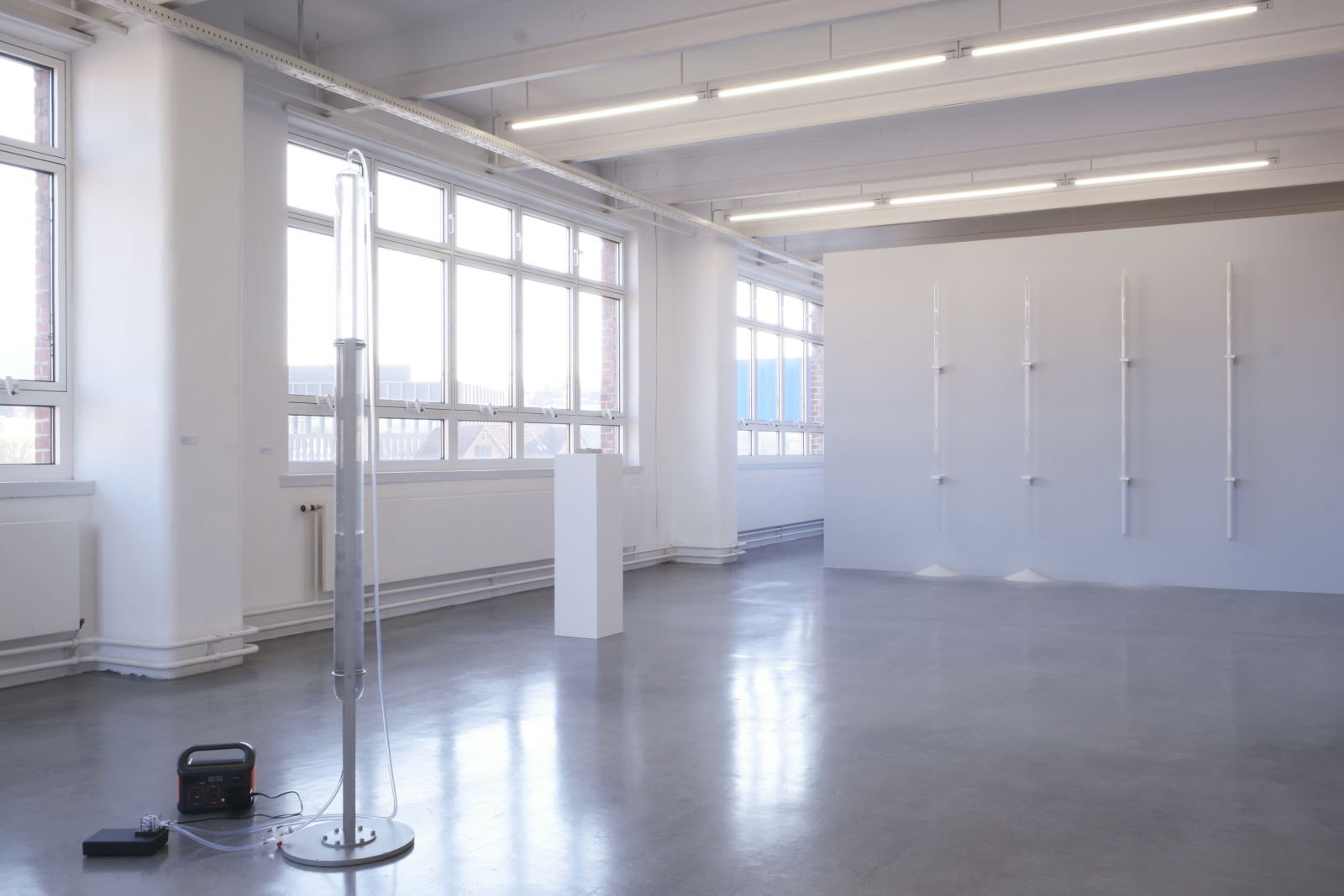
| Exhibition view: Vom Verrinnen. Zeitkonzepte der Gegenwartskunst / On Trickling Away. Concepts of Time in Contemporary Art, Kunstmuseum Reutlingen, 2022. Photo: H. Kube Ventura © VG Bild-Kunst Bonn, 2022. In the foreground, Falling Water, 2019, a vertical glass tube, one third of which is filled with distilled water and two thirds with silicone oil. The water on the bottom is pumped up by means of a small digitally controlled pump and falls down through the silicone oil as small droplets.
| |
|
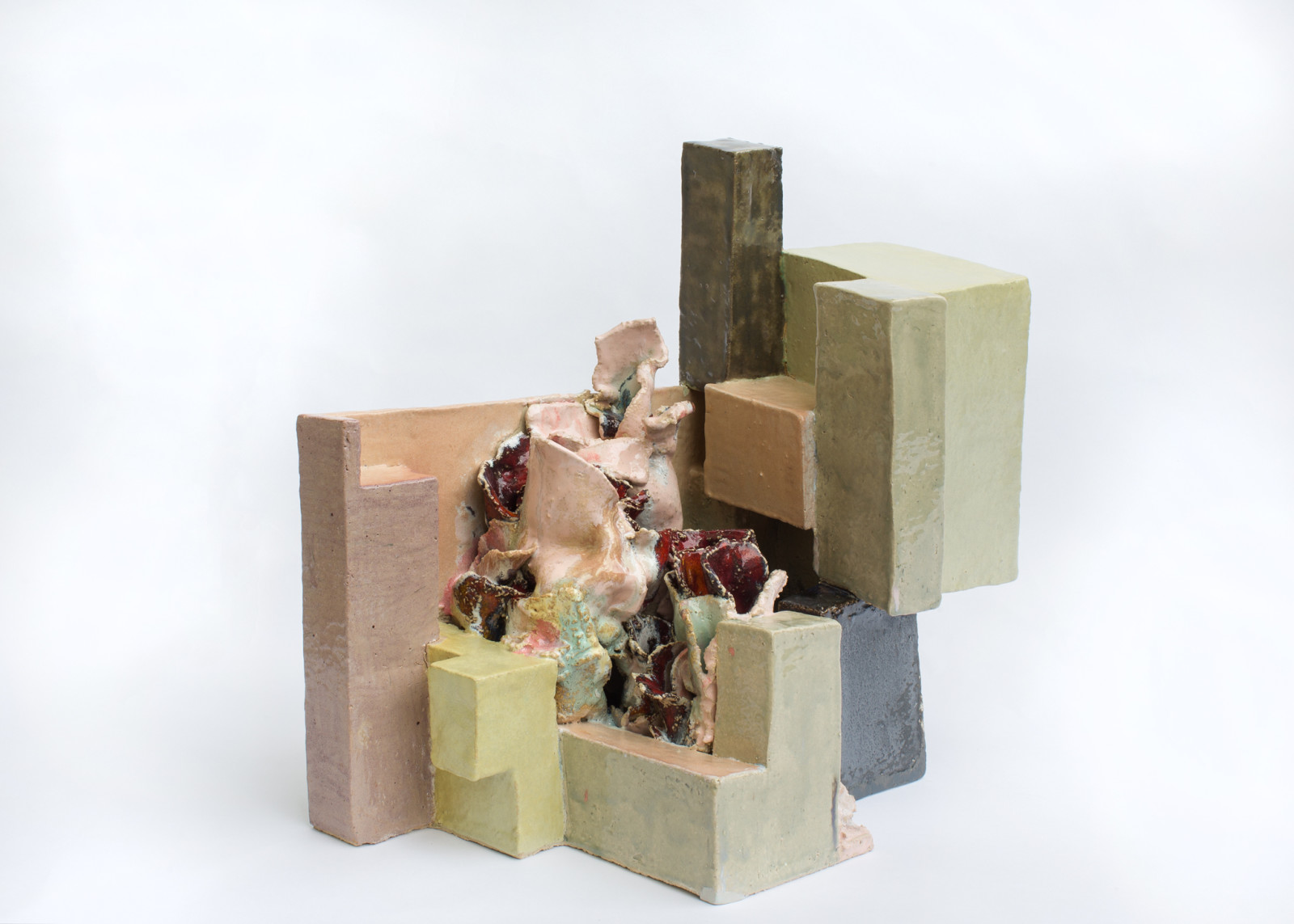
| Isa Melsheimer, Metabolit 12, 2020, ceramic, glaze, 44,5 x 55 x 25 cm. Photo © the artist | |
|
Isa Melsheimer's solo exhibition at the Centre international d’art et du paysage, designed by Aldo Rossi and Xavier Fabre, explores the architectural and cultural legacies of postmodernism through newly commissioned sculptures, textile works and installations that merge the organic and inorganic across singular forms.
In a new series of large-scale ceramic works, Melsheimer draws inspiration from the plant Welwitschia mirabilis, which grows in the Namib desert of Namibia and Angola. Named after the first European to describe the plant in 1859, Welwitschia is inscribed within a legacy of 18th- and 19th-century European expeditions in which plant specimens were collected, taxonomized and added to botanical collections. In the case of Welwitschia, a double claiming thus occurred—of the plant itself and the right to name it.
Melsheimer’s pieces depict Welwitschia-like forms that gradually merge with architectural elements. With their tentacular leaves interweaving and gradually engulfing the built forms, the plants appear to merge with the architecture, perhaps enacting their own organizational principles and right to claim.
The combined sculptural gesture of Melsheimer’s pieces, which gain in height as horizontal leaves intertwine with vertical walls, evokes another series of works with their own legacy of extraction and contested ownership: the Parthenon Marbles, now in the collection of the British Museum. Through this formal gesture Melsheimer makes oblique reference to the historic act of colonial acquisition and entitlement, as well as ongoing disputes over restitution.
For the artist, this historical act of appropriation finds an echo in postmodernism, where stylistic or theoretical citations from the past are decontextualized and juxtaposed in new form; a renewal of appropriation as plunder.
The ensemble of works in the exhibition suggests a reckoning with the legacies of modernism, as well as a recalibration of human relationships with the environment. Plants and other non-human species are shown to have their own potential for agency.
|
|
|
Villa Schöningen
with Ann Veronica Janssens, Isa Melsheimer, and Karin Sander
|
|
Blanc de Blancs, a large-scale group exhibition with works by Ann Veronica Janssens, Isa Melsheimer and Karin Sander, opens tonight, Friday, March 18, at the Villa Schöningen in Potsdam, near Berlin. The exhibition which was curated by Sonia González and Gregor Hildebrandt will be on view through May 8, 2022.
|
|
|
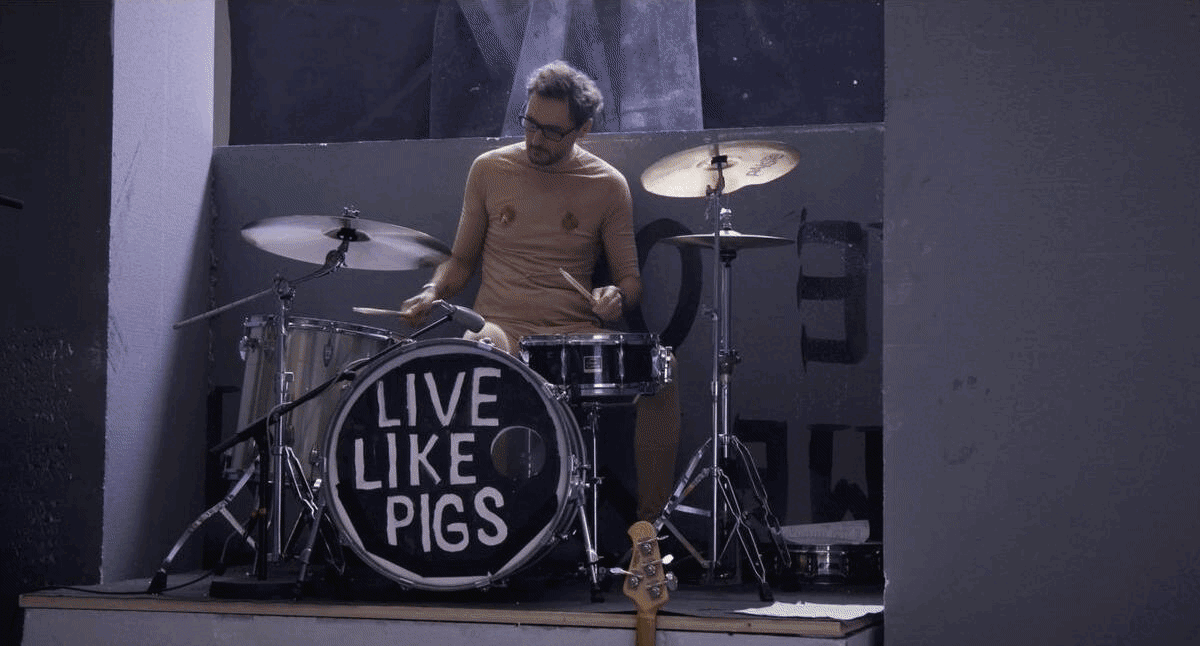
| Stills: Liam Gillick and Gelitin, Stinking Dawn, 2022, film, duration: 92 min. © the artists | |
|
Stinking Dawn - a movie by Liam Gillick and Gelitin, examines the limits of human tolerance in the face of oppression, political crisis and excessive self-delusion, where the boundaries between body and world dissolve in a delirious and darkly funny mirror image of civilization itself. In 2019, Liam Gillick and Gelitin took over the Kunsthalle Wien and turned it into a film set composed of massive polystyrene blocks, stacked into monumental structures – complete with a mausoleum and nightclub. The resulting movie is a radical, improvised collective project that tells the story of four narcissists battling their own desires. Stinking Dawn creates a miniature civilization with a baroque corporeality. It is a fight between autonomy and the rise of the new right; freedom and repression. Stinking Dawn is darkly humorous, transgressive and political. An unruly, cinematic work in its own right – and a cinematic experience unlike any other. CPH:DOX, Copenhagen International Documentary Film Festival Screenings: March 25, March 30, and April 3, 2022 Tickets available here
|
|
|
Liam Gillick
in piedi in cima a un edificio: Film 2008-2019 | Standing on Top of a Building: Films 2008-2019
2020
Publisher: Arte’m / Madre Napoli
Language: Italian, English
Available here
|
|
Liam Gillick
Half a Complex
2019
Publisher: Hatje Cantz
Language: English
Available here
|
|
Grönlund-Nisunen
Grey Area
2017
Publisher: The Finnish Art Society
Language: English, Finnish, Swedish
Available here
|
|
Ann Veronica Janssens
Endless Andness: The Politics Of Abstraction According To Ann Veronica Janssens
2013
Publisher: Bloomsbury Academic
Language: English
Available here
|
|
Jac Leirner
in conversation with Adele Nelson
2011
Publisher: Fundación Cisneros/Colección Patricia Phelps de Cisneros
Language: English, Spanish
Available here
|
|
Jac Leirner
Add It Up
2017
Publisher: Fruitmarket Gallery
Language: English
Available here
|
|
Jac Leirner
Wolfgang-Hahn-Preis 2019
2019
Publisher: Walther Koenig
Language: German, English
Available here
|
|
Isa Melsheimer
Kontrastbedürfnis
2015
Publisher: Verlag für moderne Kunst
Language: German, English
Available here
|
|
Ari Benjamin Meyers
Tacet in Concert
Publisher: Corraini Edizioni
Language: English
Available here
|
| |
|
Roman Ondak
History Repeats Itself
2017
Publisher: Verlag der Buchhandlung König
Language: Danish, English
Available here
|
|
|
|
|
